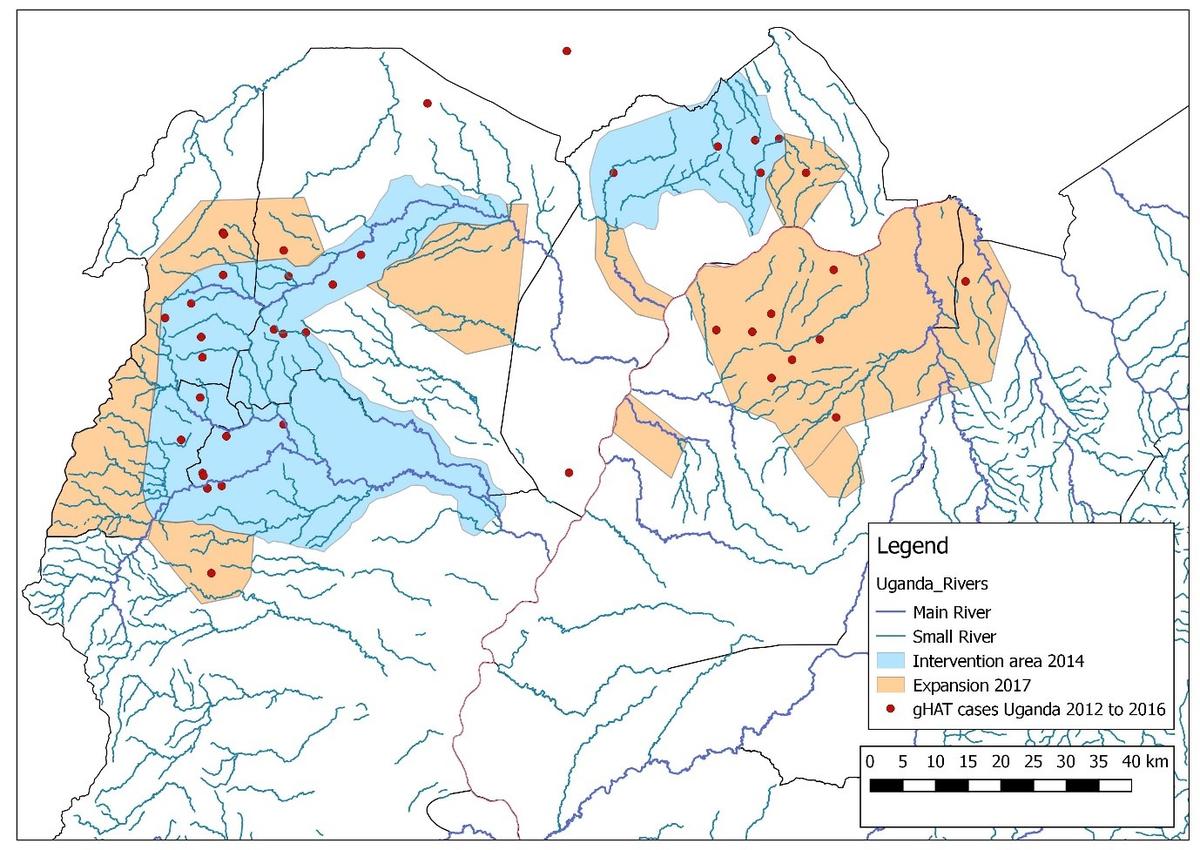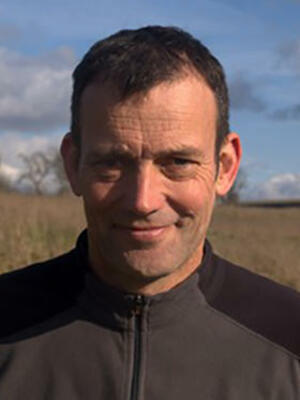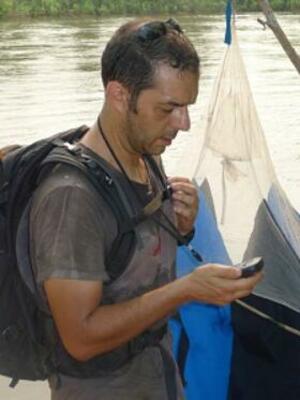BMGF reference: OPP1154033
The Trypa-NO! project was a BMGF investment led by FIND with a consortium of partners specialising in gHAT screening and vector control to implement an integrated control programme in four countries: Chad, Cote d’Ivoire, Guinea and Uganda. The aims of the Trypa-NO! project were to drive to zero the annual number of gHAT cases in Cote d’Ivoire and Uganda and to reduce cases by 90% in Guinea and Chad.
LSTM was responsible for implementation of tsetse control in Uganda in partnership with the national control programme (COCTU). In addition, LSTM provided technical support to tsetse control operations in Chad.

In Uganda, since 2014, LSTM and COCTU were implementing tsetse control in 5 districts under the BMGF funded Targeting Tsetse project, that project covered ~2,500km2 achieving reductions in tsetse densities >80%. With the Trypa-NO! investment, operations were extended to include two further districts as well as expansions in the 5 original districts, this gave an operational area of ~5,000km2. The deployment of Tiny Targets in Uganda is managed by District Entomologists who are part of the local government structure. Each District Entomologist has a team of target deployers who do biannual deployment of Tiny Targets on foot along designated rivers. Under the Trypa-NO! project, across the seven Districts, ~42,000 Tiny Targets were deployed on an annual basis. The District Entomologists were also responsible for quarterly entomological monitoring at fixed sentinel sites with >80% reduction in tsetse densities recorded.
During the Trypa-NO! project insecurity in South Sudan forced >800,000 people to flee to Uganda and many were settled in areas adjoining the project intervention area. South Sudan is endemic for gHAT and in response to the humanitarian crisis the Trypa-NO! consortium, with supplemental funds from BMGF, introduced screening of refugee populations and vector control in affected areas for one year, this resulted in an additional 1,000km2 of tsetse control.
COCTU had responsibility for the overall management of tsetse control by the District Entomologists and provided monitoring and support. LSTM also provided technical support to COCTU and the District Entomologists. In addition to the tsetse monitoring conducted by the District Entomologists we also operated a separate team of trap attendants to provide independent data on the reduction of tsetse densities. The LSTM trapping team also monitored tsetse for trypanosome infections.
LSTM initiated capacity strengthening work with COCTU, in collaboration with the CCR at LSTM following their 5-step capacity strengthening methodology. As a result of this work we provided training on QGIS to each of the District Entomologists with ongoing post-training support. COCTU provided field first aid training to District Entomologists and we completed a round of asset evaluation and replacement.
Over the course of the Trypa-NO! project with the integration of medical and vector control activities, the number of cases in Uganda has continued to decline with only 3 indigenous cases reported during the lifetime of the project.
In Chad, LSTM provides technical support to the national control programme for tsetse control operations in the Mandoul and Maro foci. The intervention area here covers ~1,000km2, up to 5,000 Tiny Targets were deployed annually. The number of new cases reported in Chad in 2018 was 12, down from 195 before vector control started.
The Trypa-NO! project has also made impressive gains in Guinea and Cote d’Ivoire where, like Uganda and Chad, the integration of medical and vector control activities is a key contributor to this success.







